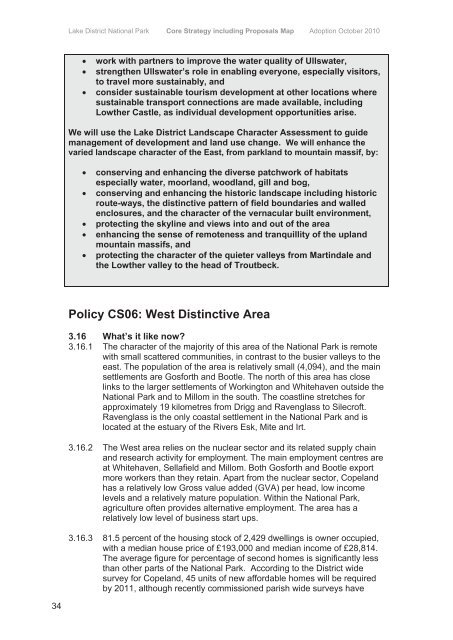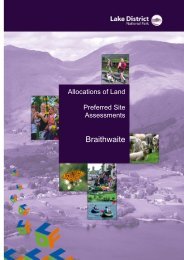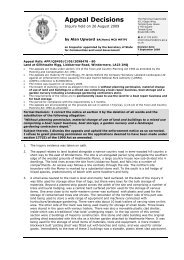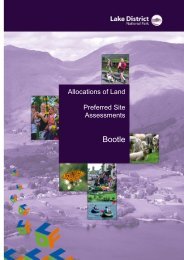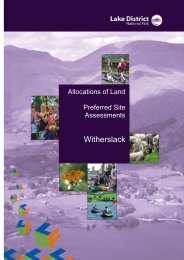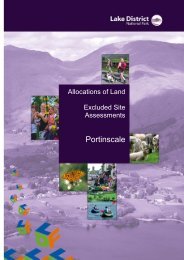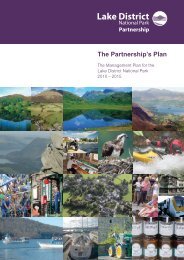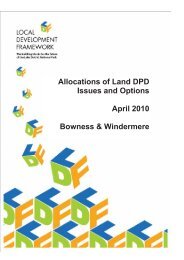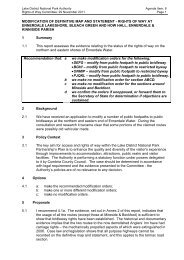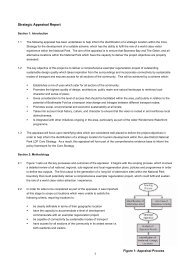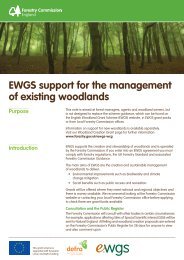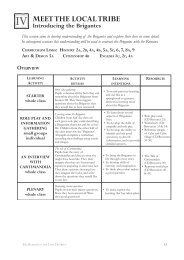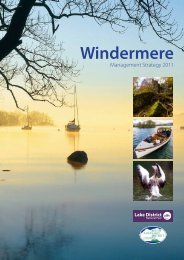Core Strategy (PDF) - Lake District National Park
Core Strategy (PDF) - Lake District National Park
Core Strategy (PDF) - Lake District National Park
You also want an ePaper? Increase the reach of your titles
YUMPU automatically turns print PDFs into web optimized ePapers that Google loves.
<strong>Lake</strong> <strong>District</strong> <strong>National</strong> <strong>Park</strong> <strong>Core</strong> <strong>Strategy</strong> including Proposals Map Adoption October 2010<br />
<br />
<br />
<br />
work with partners to improve the water quality of Ullswater,<br />
strengthen Ullswater’s role in enabling everyone, especially visitors,<br />
to travel more sustainably, and<br />
consider sustainable tourism development at other locations where<br />
sustainable transport connections are made available, including<br />
Lowther Castle, as individual development opportunities arise.<br />
We will use the <strong>Lake</strong> <strong>District</strong> Landscape Character Assessment to guide<br />
management of development and land use change. We will enhance the<br />
varied landscape character of the East, from parkland to mountain massif, by:<br />
<br />
<br />
<br />
<br />
<br />
conserving and enhancing the diverse patchwork of habitats<br />
especially water, moorland, woodland, gill and bog,<br />
conserving and enhancing the historic landscape including historic<br />
route-ways, the distinctive pattern of field boundaries and walled<br />
enclosures, and the character of the vernacular built environment,<br />
protecting the skyline and views into and out of the area<br />
enhancing the sense of remoteness and tranquillity of the upland<br />
mountain massifs, and<br />
protecting the character of the quieter valleys from Martindale and<br />
the Lowther valley to the head of Troutbeck.<br />
Policy CS06: West Distinctive Area<br />
3.16 What’s it like now?<br />
3.16.1 The character of the majority of this area of the <strong>National</strong> <strong>Park</strong> is remote<br />
with small scattered communities, in contrast to the busier valleys to the<br />
east. The population of the area is relatively small (4,094), and the main<br />
settlements are Gosforth and Bootle. The north of this area has close<br />
links to the larger settlements of Workington and Whitehaven outside the<br />
<strong>National</strong> <strong>Park</strong> and to Millom in the south. The coastline stretches for<br />
approximately 19 kilometres from Drigg and Ravenglass to Silecroft.<br />
Ravenglass is the only coastal settlement in the <strong>National</strong> <strong>Park</strong> and is<br />
located at the estuary of the Rivers Esk, Mite and Irt.<br />
3.16.2 The West area relies on the nuclear sector and its related supply chain<br />
and research activity for employment. The main employment centres are<br />
at Whitehaven, Sellafield and Millom. Both Gosforth and Bootle export<br />
more workers than they retain. Apart from the nuclear sector, Copeland<br />
has a relatively low Gross value added (GVA) per head, low income<br />
levels and a relatively mature population. Within the <strong>National</strong> <strong>Park</strong>,<br />
agriculture often provides alternative employment. The area has a<br />
relatively low level of business start ups.<br />
3.16.3 81.5 percent of the housing stock of 2,429 dwellings is owner occupied,<br />
with a median house price of £193,000 and median income of £28,814.<br />
The average figure for percentage of second homes is significantly less<br />
than other parts of the <strong>National</strong> <strong>Park</strong>. According to the <strong>District</strong> wide<br />
survey for Copeland, 45 units of new affordable homes will be required<br />
by 2011, although recently commissioned parish wide surveys have<br />
34


